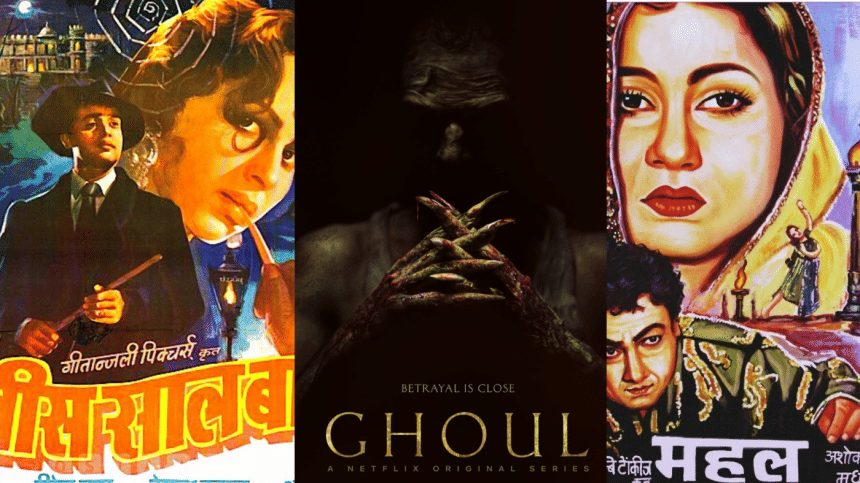The evolution of horror on Bollywood silver screen

The horror genre in Bollywood has come a long way since its inception. From the days of black-and-white classics to the modern era of psychological thrillers and supernatural tales, the evolution of horror in Indian cinema is a fascinating journey. This genre has not only sent chills down the spines of audiences but also provided a unique lens through which filmmakers have explored societal fears and cultural taboos.
In this article, we will take you on a tour through the evolution of horror in Bollywood—a captivating journey that mirrors the changing sensibilities and societal contexts of India.
Horror made its first appearance in Bollywood with films like "Mahal" (1949) and "Bees Saal Baad" (1962). These movies primarily drew inspiration from Gothic horror literature, incorporating elements like eerie mansions, mysterious women, and haunting melodies. The supernatural themes were prevalent, and the horror was often more melodramatic than terrifying. Iconic songs and captivating storytelling were at the heart of these early horror films.

The 1980s marked a significant shift in Bollywood horror with the arrival of the Ramsay Brothers. Known for their campy, low-budget horror films, the Ramsay Brothers became synonymous with Indian horror. Movies like "Purani Haveli" (1989) and "Veerana" (1988) relied heavily on the supernatural, showcasing ghosts, witches, and other mythical creatures. Although these films had their fair share of critics, they found a loyal fan base, making horror more accessible to Indian audiences.

As the 1990s rolled in, filmmakers began experimenting with psychological horror. Movies like "Raaz" (2002) and "Bhoot" (2003) marked a shift from overtly supernatural elements to psychological thrillers that played on the fears within one's mind. These films delved into human psychology, making audiences question the blurred line between reality and illusion. This change in approach appealed to a more mature and discerning audience.

In recent years, Bollywood has witnessed a new wave of horror films that break away from traditional conventions. Movies like "Bhool Bhulaiyaa" (2007), "Pari" (2018), and "Stree" (2018) have brought fresh ideas to the genre. These films combine horror with social commentary and sometimes comedy, creating a unique blend that showcases that horror can be a medium to address pertinent social issues and offer a deeper commentary on contemporary society.

Bollywood has also seen collaborations with international talent in the horror genre. "The House Next Door" (2017) is an example of such an endeavor. Directed by Milind Rau and co-produced by Siddharth, the film seamlessly blended elements of Indian and Western horror, creating a more global appeal. This cross-pollination has helped raise the bar for Indian horror and expand its global reach.

The rise of streaming platforms has significantly impacted the horror genre in Bollywood. With the likes of Netflix and Amazon Prime producing original content, horror has found a new home. Series like "Ghoul" (2018) and "Typewriter" (2019) have pushed the boundaries of what is possible in Indian horror, attracting both critical acclaim and a dedicated fan base.

The evolution of horror in Bollywood is not merely a chronological progression but a reflection of the ever-changing psyche of Indian society. From its melodramatic roots to the contemporary explorations of societal fears and psychological horror, Bollywood has traversed a labyrinthine path in its horror narratives. As the industry continues to innovate, collaborating with international talents and finding a haven in streaming platforms, the future of horror in Bollywood appears promising. It will undoubtedly continue to challenge conventions and resonate with a diverse, discerning audience, making it an exciting space to watch for years to come.

 For all latest news, follow The Daily Star's Google News channel.
For all latest news, follow The Daily Star's Google News channel. 









Comments